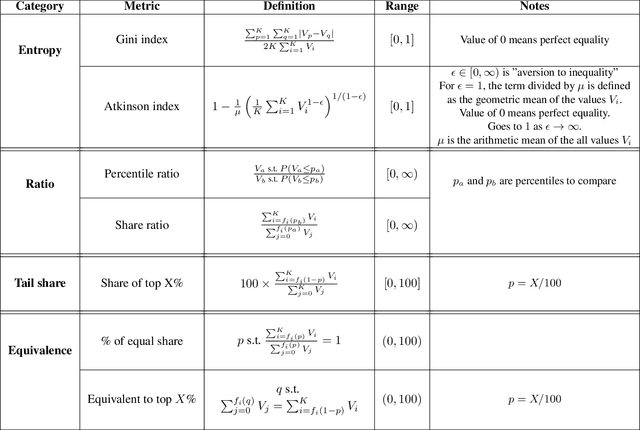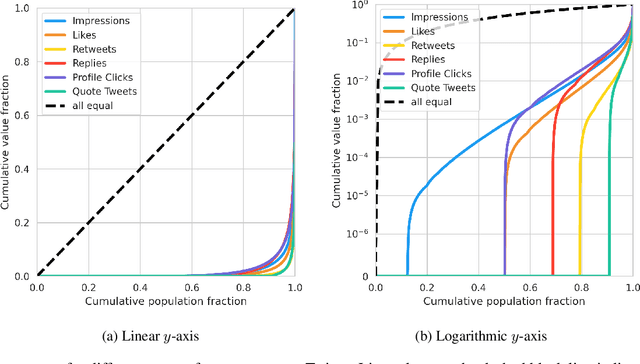Measuring Disparate Outcomes of Content Recommendation Algorithms with Distributional Inequality Metrics
Paper and Code
Feb 03, 2022



The harmful impacts of algorithmic decision systems have recently come into focus, with many examples of systems such as machine learning (ML) models amplifying existing societal biases. Most metrics attempting to quantify disparities resulting from ML algorithms focus on differences between groups, dividing users based on demographic identities and comparing model performance or overall outcomes between these groups. However, in industry settings, such information is often not available, and inferring these characteristics carries its own risks and biases. Moreover, typical metrics that focus on a single classifier's output ignore the complex network of systems that produce outcomes in real-world settings. In this paper, we evaluate a set of metrics originating from economics, distributional inequality metrics, and their ability to measure disparities in content exposure in a production recommendation system, the Twitter algorithmic timeline. We define desirable criteria for metrics to be used in an operational setting, specifically by ML practitioners. We characterize different types of engagement with content on Twitter using these metrics, and use these results to evaluate the metrics with respect to the desired criteria. We show that we can use these metrics to identify content suggestion algorithms that contribute more strongly to skewed outcomes between users. Overall, we conclude that these metrics can be useful tools for understanding disparate outcomes in online social networks.
 Add to Chrome
Add to Chrome Add to Firefox
Add to Firefox Add to Edge
Add to Edge